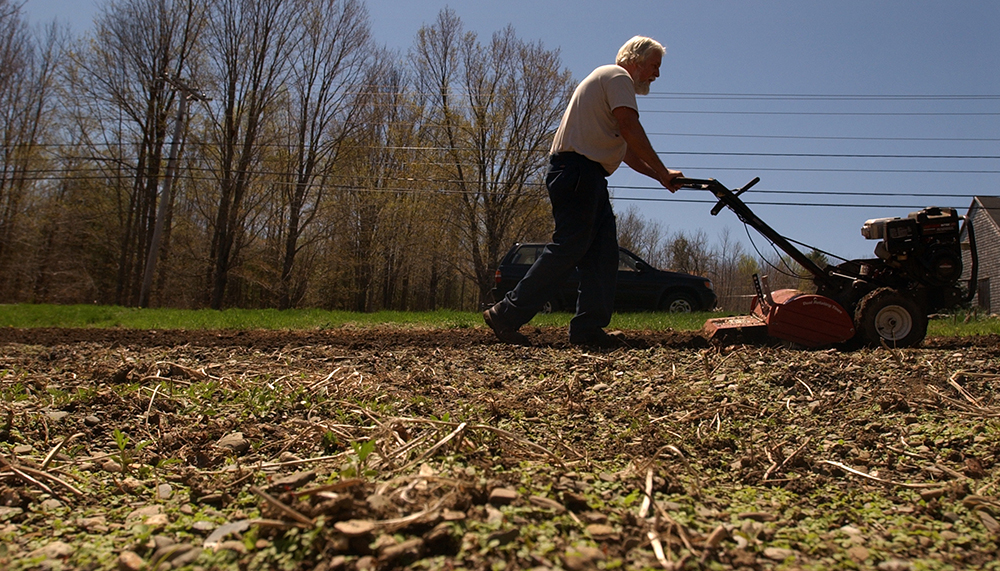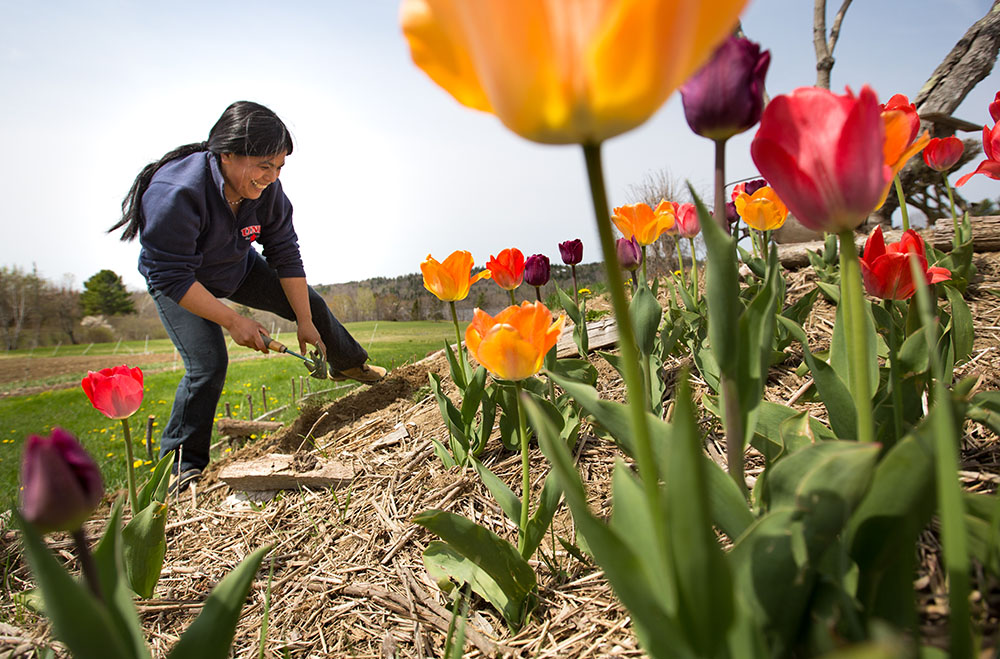What is conservation tillage?
Soil health is the foundation of productive farming. Increasingly, farmers are turning to conservation tillage in order to maintain the long-term health of their soil.

Tilling is the act of digging, stirring, breaking it up or overturning the soil. Farmers till after harvesting in order to prevent weeds. Though it can be an effective weed management technique, tilling can dismantle the natural structure of the soil and disrupt the microbes living there.
Tilling is especially popular among organic farmers.
“Because organic farmers don’t use herbicides, they often rely on tillage and soil cultivation to manage weeds which can degrade soil health,” said Matthew Ryan, associate professor of sustainable cropping systems at Cornell University.
Ryan said that organic farmers will make up for the soil degradation caused by tilling by adding amendments like compost, but when implemented effectively, conservation tillage protects soil health while reducing or phasing out the need for tilling at all.
How do conservation tillage practices in agriculture benefit the soil?
The act of tilling oxidizes soil, which speeds up the decomposition of the organic matter that is essential to both the structure of the soil and the growth of healthy crops.
“You [stimulate microbial activity and] increase the oxygen levels in the soil by tilling it,” Ryan said. “The microorganisms degrade the organic matter faster that way. What you’re trying to do when you reduce tillage is to prevent that decomposition and degradation of organic matter.”
Crop residue, the vegetative matter left behind after a harvest that is generally removed during tillage, also aids soil structure.
“It’s [crop] residue that helps protect the soil,” Ryan said. “It contributes carbon that microorganisms eat, but it also protects the soil from rain.”
Conservation tillage improves soil health, which leads to higher yields.
“All farms should be considering their soil and should be trying to manage their operation in a way that maintains or improves the quality of the soil over time,” Ryan said. “When you are doing that, even on a smaller scale, there are opportunities to improve the soil and increase its performance [with] higher yields over time. If you take care of the soil it will take care of you.”
By improving soil health, conservation tillage also increases resilience against extreme weather events, from droughts to deluges.
“By having improved soil health, you can retain more of the soil moisture that was there previously before it stopped raining,” Ryan said. “Even when you have too much rain, more of that rain goes into the soil and less of it running off.”

The spectrum of conservation tillage
Farmers practicing conservation tillage will reduce tilling at various levels. Aaron Daigh, assistant professor of soil physics at North Dakota State University, said that the degree of applying of conservation tillage varies widely depending on the farmer and their land.
Conservation tillage practices range from strip-tillage, where rows are tilled just prior to planting, to direct seeding or no-till methods that eliminate tillage altogether.
“The types of conservation tillage that we see people becoming interested in up here ranges,” Daigh said. “We find a lot of interest in these various types of conservation tillage as a stepping stone to no-till.”
The challenges of conservation tillage
Experts admit that, particularly in the first few years, weed management can be more difficult with conservation tillage. This is especially true if you are an organic farmer or adverse to using herbicides.
“One of the challenges is the potential for increased weed problems,” Ryan said. “If you’re not turning the soil over as much, weeds have the opportunity to take root. Perennials weeds especially can become more problematic when you reduce tillage.”
Farmers in colder climates may also practice tillage to warm soil and improve yields.
“A lot of folks up here [in North Dakota] traditionally will till the soil to dry to get it to dry out and warm up better for higher yields,” Daigh explained. “For a lot of people that have been plowing or tilling for multiple generations, the idea as suddenly stopping tilling is perceived as a big risk.”
Daigh said that starting conservation tillage during wet years can lead to reduced yields.
The perceived risk of conservation tillage, Daigh said, can even be inherited through generations of farmers.
“In the ‘80s and ‘90s, no-till was taking off,” Daigh said. “The first year in those decades, farmers that went into no-till likely had difficulties and saw a drop in yields. That lingers into the next generation, we’ve heard from young farmers.”
The risk can be mitigated, however, if farmers plan carefully before they implement conservation tillage.
“If someone has planned how are they going to change their fertilizing and how are they going to change their weed control, the first year and several years into no-till can be very little if any risk at all,” Daigh said.
How to practice conservation tillage
The best method for conservation tillage will depend on the land.
“It really depends on the system,” Ryan said. “What’s going to work in some places is not going to work necessarily in other places.”
Ryan said there are many resources available to help you tackle conservation tillage on your land.
“Connect with your local cooperative extension educator,” Ryan said. “Those people should be able to help you learn about what you could be doing in your own area. The Natural Resources Conservation Service [also has] people deployed across the landscape that can help farmers come up with plans to implement conservation tillage systems.”
Conservation tillage also pairs well with other sustainable agricultural methods, like planting cover crops. Start using other sustainable agriculture practices on your fields and gardens, like cover crops.
“Cover crops are a really good way of adding carbon and increasing the soil’s organic matter,” Ryan said. “[With cover crops and conservation tillage,] you’re trying to stop the losses and increase the additions. It’s a dual approach to improving soil.”
